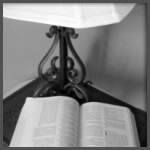False.

I wasn’t much of a reader when I was growing up, but my children devour books like they are Willy Wonka chocolate bars. On more than one occasion I’ve quietly snuck up to my children’s bedrooms (after the time they were supposed to be sleeping) and have discovered them reading in practical darkness next to a small nightlight, or reading under their covers with flashlights. Such discoveries can worry parents. Many kids have been admonished for reading in low light conditions because their parents believe that it can damage vision. However, this has never been supported by research. In an article entitled Myopia: the nature versus nurture debate goes on published in the Journal Investigative Ophthalmology & Visual Science (1996), the authors note some environmental factors that can lead to myopia, but reading in low light conditions was not one of them. When you think about it, people used to read by candlelight by necessity, and there is no evidence that it damaged their eyesight. Reading in low light, like sitting too close to the television, can lead to eyestrain, where the eyes can become red, irritated, watery, blurry, and dry. But eyestrain usually only lasts for a short period of time and doesn’t result in vision damage. Our eyes are pretty incredible and allow us to see in a variety of environments. When in low light conditions, our eyes make a variety of adjustments to help us see better. These adjustments include pupil dilation, the production of certain chemicals to make our eyes more sensitive to light, as well as the nerves on the retina becoming more receptive to light. If you have to read in low light conditions, take breaks every 15 to 30 minutes and try to remember to blink often as this will likely help reduce the chances of your eyes getting tired and irritated.
Reference:
Mutti D, Zadnick K, Adams A: Myopia: The nature versus nurture debate goes on. Investigative Ophthalmology & Visual Science (1996), Vol 37, 952-957.
